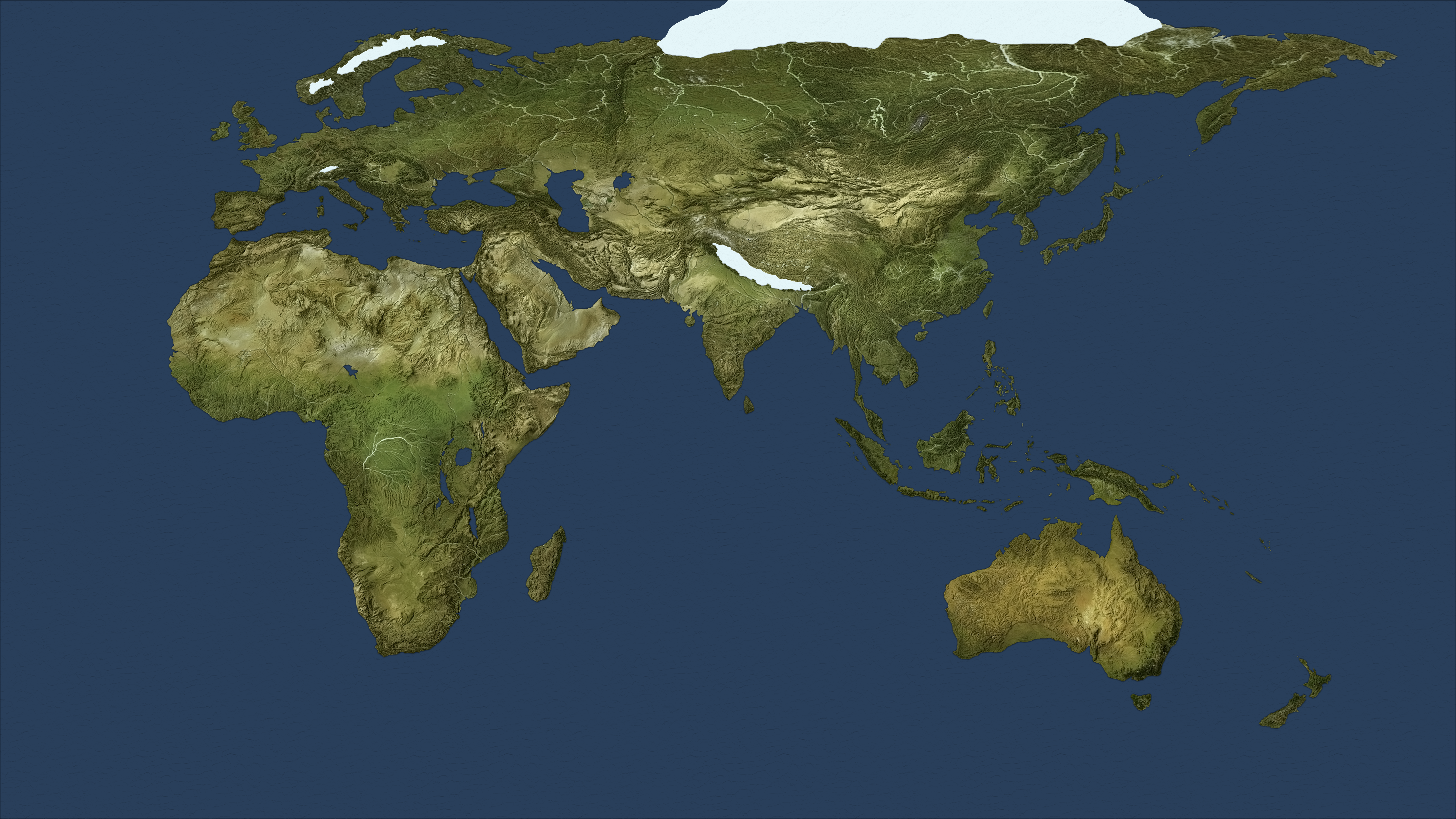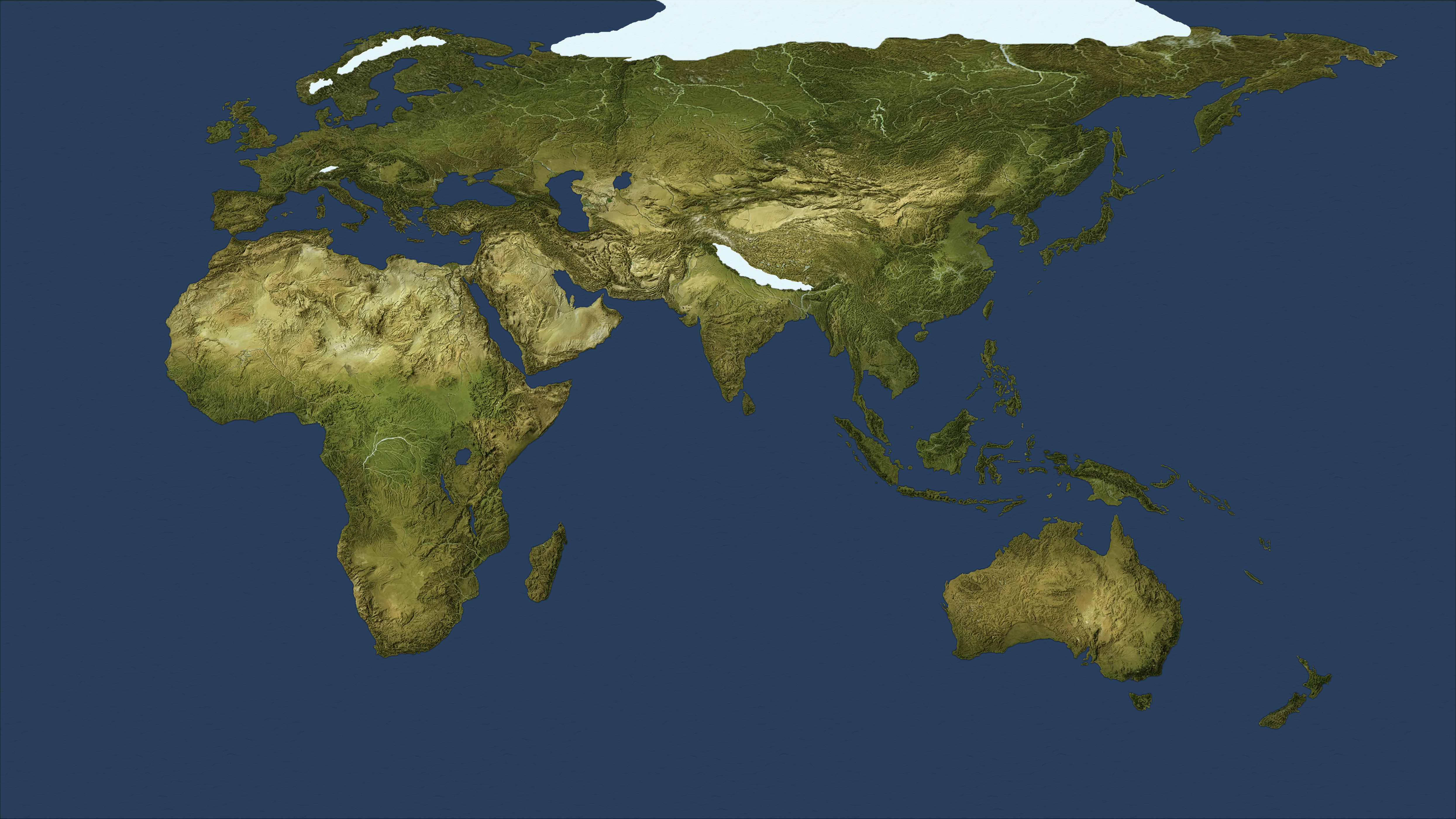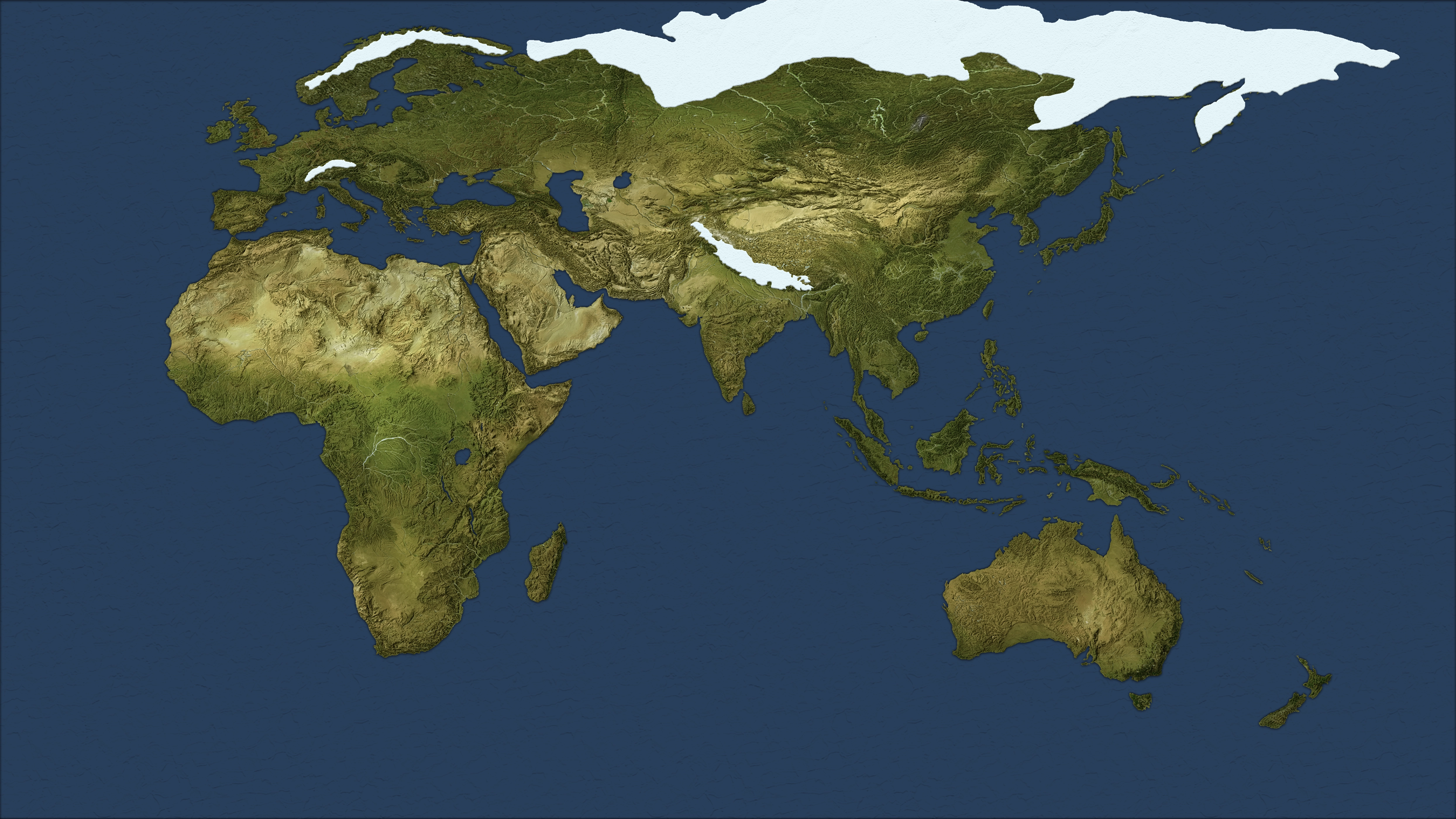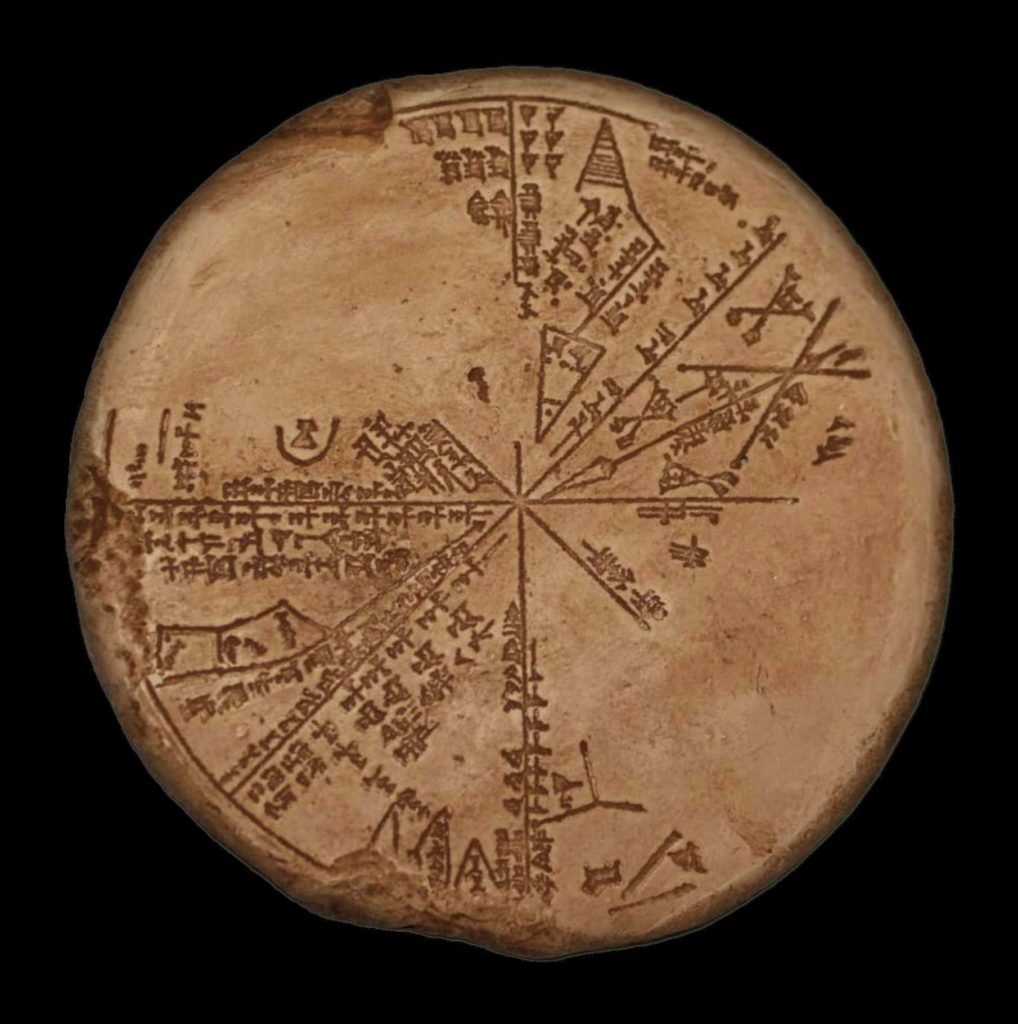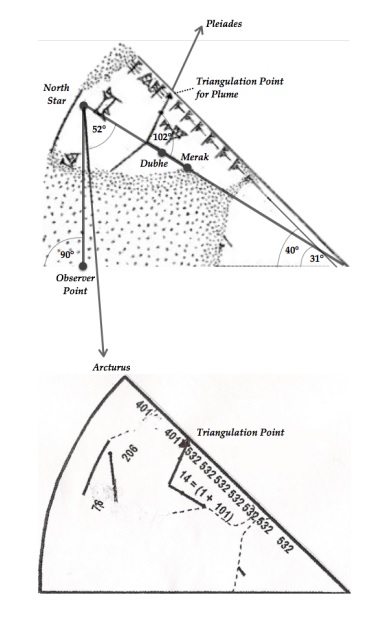Meghalaian Turning (/meɪɡʱɐ́ːˈləjən ˈtɜːnɪŋ/)
(4,213 BP - present)
The Meghalaian Turning1 is the current period of global climatological decline that began more than four thousand years ago.2
Climate and Ecology
The Meghalaian Turning began with the rapid aridification of northern Africa, southern Europe and western Asia that was the culmination of a number of environmental factors, including the Umm al Binn Meteor Impact.3 Cascading ecological failures in Europe, western Asia, and northern Africa at the start of this era produce two centuries of extreme drought and famine. Although the normal pattern during this type of turning would be to see dropping global temperatures, human technological activity has so far delayed this drop by as much as 50,000 years.4Cultures
The early part of this turning was characterized by a series of widespread cultural collapses: in 4213—4160 BP, then in 3150—3100 BP, and again in 1540—1474 BP. These collapses impacted every continent, leading to rapid widespread cultural extinctions.5 This was followed by rapid technological advancement and population growth, which led to a recent series of widespread violent conflicts in 332—267 BP, then in 194—148 BP, and in 36—32 BP, and again in 11—5 BP. These periods of worldwide violence existed against a backdrop of continual conflict that always exists between human cultures, of course; however, they are notable as "pulses" of not only increased violence and death but in many cases also coordinated violence engaged by human cultures around the globe. The details of cultures and events of this turning are, for the most part, included in contemporary historical record and therefore need not be recounted in detail here. Most articles pertaining to cultures, events, and languages in this turning are included due to their connection to earlier cultures and events. Some examples include the Latīnum and Saṃskṛtá languages, and the Hellenes and Shāng cultures, although of course this is not an exhaustive list.Turning Type
Period of Decline
Preceded By
The Kara'apian Turning
Harbinger Event
Umm al Binn Meteor Impact
Start Year
4,213 BP
Footnotes
1. Despite its similarity to the name of the latest geological stage of the Holocene epoch, the name of the Meghalaian Turning has completely different origins and etymology. The earliest written record of the name of this turning is a set of mystical inscriptions on clay tablets discovered in the ruins of Takṣaśilā, written in the Yasaskrta language using what appears to be an archaic form Dhamma Lipī script. It describes the journey of the Andronovo people as they fled the social upheavel that was taking over Europe. The tablets are dated to approximately 3,800 BP, but are clearly transcribing word-of-mouth stories that have been passed down for generations. The account says that when they looked back toward the land they had left, they saw /mɐj.ɡʱɐ́ / ("clouds") /ɑːləjə/ ("of dirt" or "of grime"). Most likely they were seeing massive amount of ash, soot, and dust thrown into the atmosphere by the Umm al Binn Meteor Impact in Birit Narim. The scribe who recorded the story years later interpreted the "clouds of grime" seen by his ancestors as harbingers of the new turning, and therefore named the turning after the Yasaskrta phrase /meɪˈɡʱɐ́ːləjən/, written as मेघालय (see Appendix A for a more detailed discussion). This is not connected to the origins of the name of the geological stage, which is named after the state in notheast India where archeologists discovered the first evidence that humans domesticated rice. 2. (Discussion of the reason for the boundary and relation to scientific periods.) 3. The force of the Umm al Binn Meteor Impact not only threw massive volumes of particulates into the atmosphere, but also produced minor EOOs (Earth Orbital Oscillations) that contributed to global temperature drops and megadroughts. A 300-year mega-drought and a sharp drop in temperatures starting from 4,213 BP is well documented from Anadolu to Kemet to Arabia. Much of Birit Narim, a heavily populated region that was ground zero for the impact, remained unoccupied for more than 300 years after the event. 4. The current world climate is in an unusual circumstance where the carbon and methane releasing activities of humans would likely have spiked global temperatures if it were not for the fact that we have entered a turning of decline and cooling. Or, to put it another way, we would be experiencing the standard pattern of unstable and declining temperatures typical of the type of turning we are in, were it not for the counter-acting influence of human pollution. At best, however, human technological activities will only delay the decline and transition to the next ice age turning by as much as 50,000 years (see, e.g. Ganopolski, Winkelmann, &. Schellnhuber, 2016). Moreover, the environmental disasters that have already marked the first few millennia of the turning show that these effects don't simply "cancel out." 5. Although we refer to these collapses as worldwide, that does not mean every single culture suffered. On the contrary, the sudden collapse of some dominent cultures opened opportunities for other cultures to rise to dominance. One of the most salient examples of this is the Pūt culture in the Levant, which had existed since the start of this turning but only attained dominance as a seafaring culture in the region after the 3150—3100 BP collapse wiped out all of the competing powers in the region.Turnings Index
Type Key



